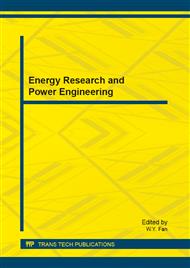p.1453
p.1458
p.1463
p.1467
p.1472
p.1477
p.1482
p.1486
p.1491
Test Research on Thermal Conductivities of Silty Clay in Freezing and Thawing Based on Thermal Current Meter Method (TCMM)
Abstract:
Silty clay’s disturbed soil samples of were measured to ascertain the correlations between thermal conductivity and dry density or water content in the freezing and thawing conditions and provide a certain reference for soil’s thermal conductivity measurement of underground project in seasonal frozen area in future. The relationship between another variable and thermal conductivity was inquired into through fixing one variable in the test process. Through the test data analysis, the conclusion can be drawn as followed. Keeping dry density unchanged, silty clay’s thermal conductivities in freezing and thawing increase with water contents. When dry densities are different, the growth trends of thermal conductivities are slightly different. In the same moisture content, the relation between dry density and thermal conductivity appears as positive correlation.
Info:
Periodical:
Pages:
1472-1476
Citation:
Online since:
July 2013
Authors:
Price:
Сopyright:
© 2013 Trans Tech Publications Ltd. All Rights Reserved
Share:
Citation:


